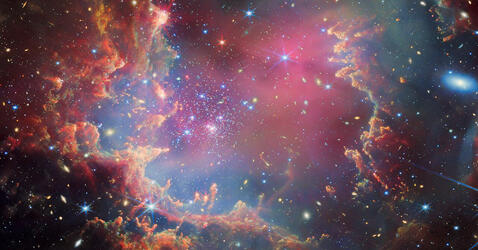You are here
Space
On 14 September, 2015, the international LIGO/Virgo collaboration detected the very first gravitational wave signal, a tiny distortion of spacetime predicted by Einstein, in this case produced by the merger of two black holes. The CNRS astrophysicist Marie-...
Article
11.03.2025
Why is the outermost part of the Sun's atmosphere, the corona, so much hotter than its surface? Ten years after formulating a hypothesis based on a numerical model, CNRS researchers have now used direct observations of the star's surface to confirm...
Article
10.09.2025
With large-scale observation campaigns, innovative data analysis methods and theoretical advances on all fronts, astrophysics and cosmology are entering a high-precision era with the potential to unravel many of the unsolved mysteries of the Universe....
Article
09.12.2025
During his “miraculous year” 120 years ago, Albert Einstein explained the photoelectric effect, laying the foundations of quantum mechanics. The historian of science Christian Bracco provides an insight.
Article
07.09.2025
01.20.2025
Astronomical observatories can yield exceptional discoveries, but they are sometimes built with little regard for the environment and local people, sparking public opposition. The sociologist and...
Article
12.04.2024
A genuine technological gem, the James Webb Space Telescope has been exploring the smallest nooks of the Universe over the last two years. From the birth of planets and the first galaxies to the...
11.15.2024
Astrochemistry, a relatively new field, focuses on exploring chemistry in interstellar spaces to uncover insights about the origins of life on Earth. This discipline has seen significant advancements...





